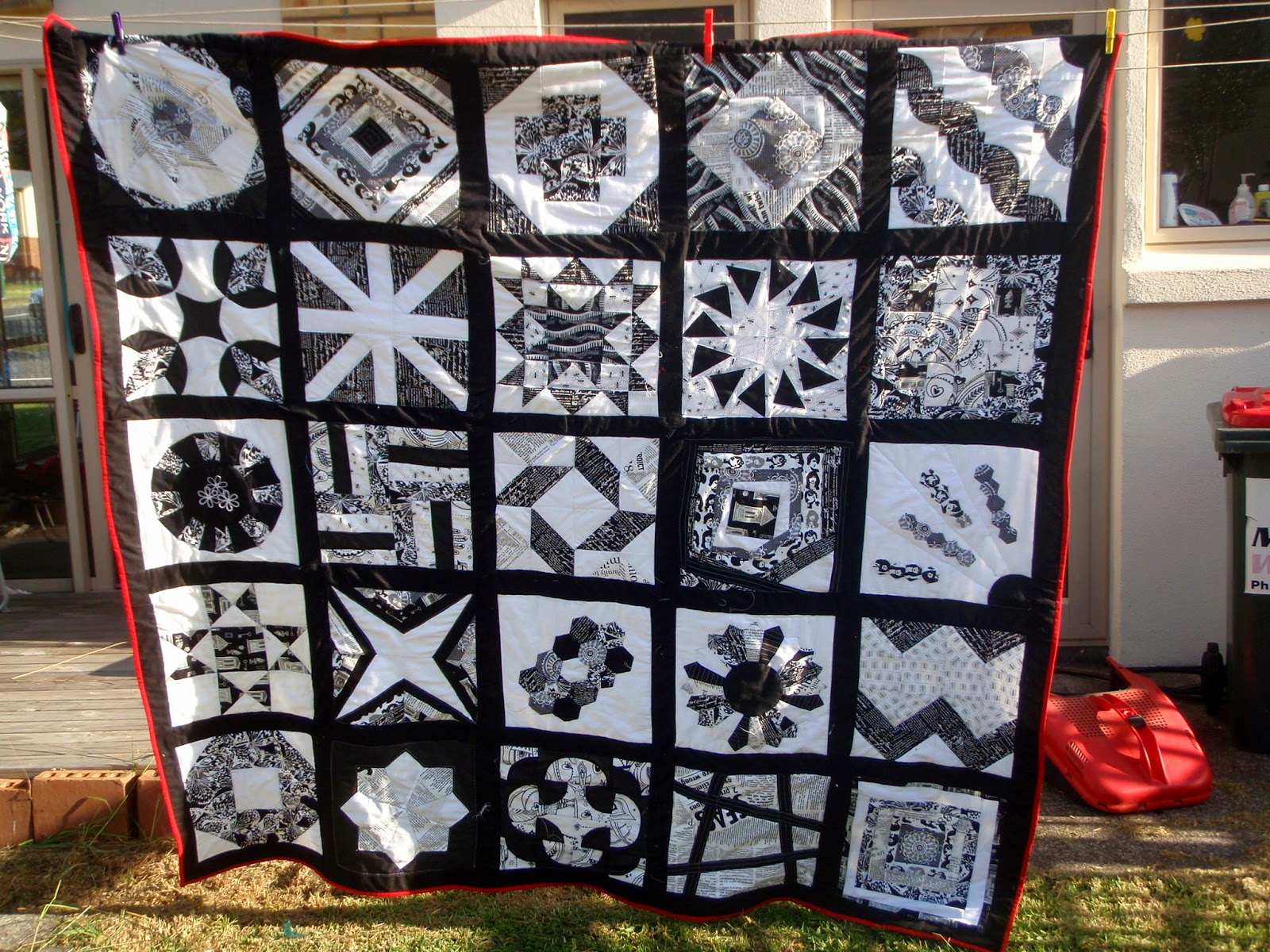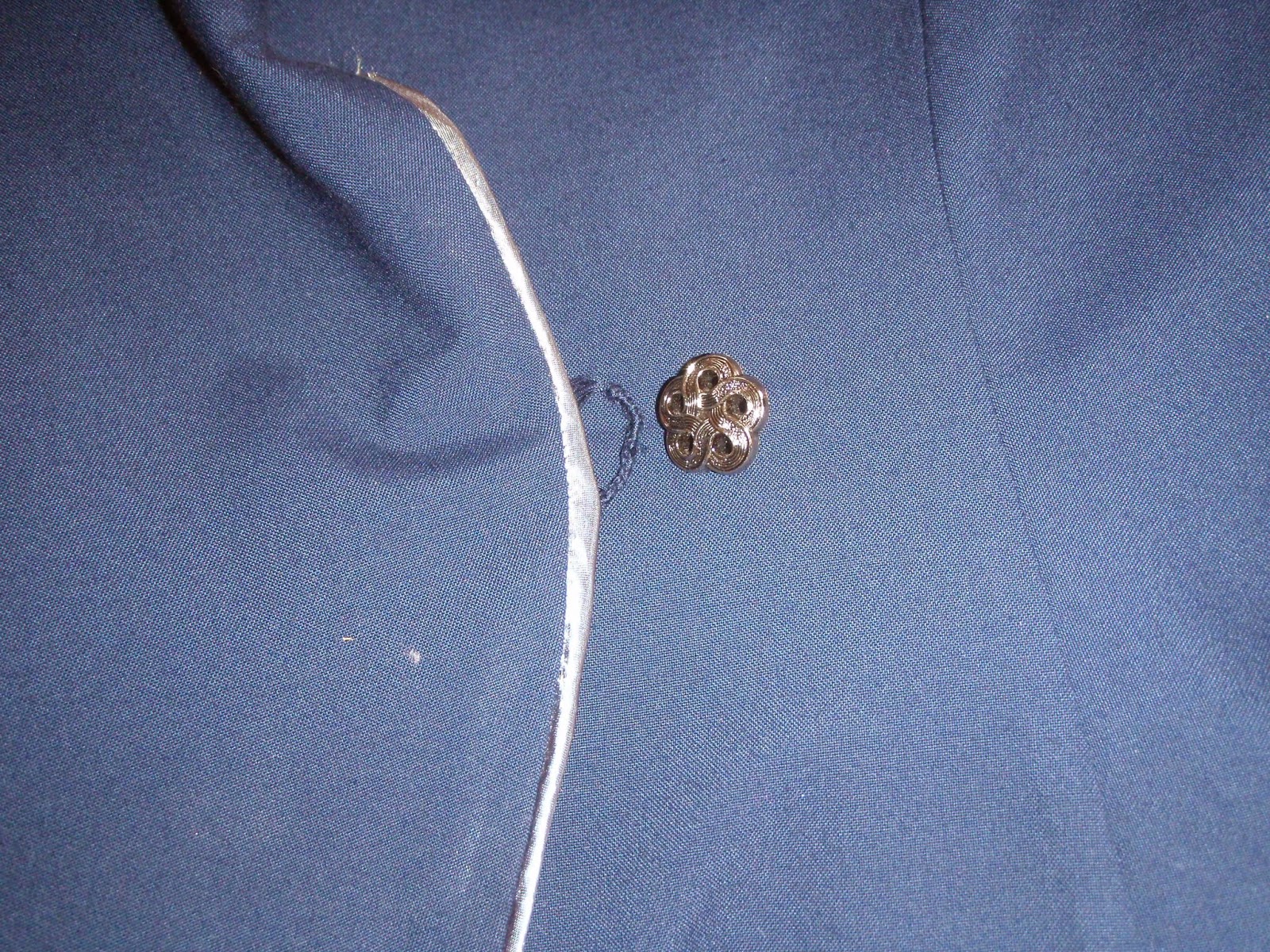This was
one of my 52 projects for last year. I
have never made a quilt before so I signed up for the Craftsy Block of theMonth 2012, and I started working on the blocks way back in March last
year.
By June I had completed all the
course blocks, as well as a few extras so I could make this into a full double
bed quilt. I managed to sew all the
pieces together, pin together the quilt back (a plain white) an organic cotton
wadding and the quilt top. I quilted two
of the blocks, then sort of ground to a halt.
The quilt was carefully draped at the top of the stairs for a good 6
months!
Just
after Christmas I was at a BBQ and I met Rona, from layer upon layer. Obviously we got to talking about sewing, and
quilting. She had a couple of ideas to
make quilting the centre blocks in the quilt easier, and a cool way to bind the edges with two colours. A quick wander
round her web site and I was inspired to get back to this quilt.
I originally intended to use leftover fabric from
my stash, but started off with black and white prints and decided that I quite
liked the monochromatic look, so ended up supplementing my stash with fat
quarters from Spotlight.
One of them, in particular, had a slightly spooky
connection, which I didn’t spot until I was quilting a block that used it. I had an old friend, who is now living
overseas called Craig Love.
The day
after I spotted his name in the quilt I got an email from him saying that he
was coming back to NZ for a couple of weeks.
Spooky or what?
Having done the whole quilt in black and white I was
toying with the idea of binding it in red.
When I checked up on Rona’s method of binding with two colours, it
seemed perfect for my quilt, adding a little pop of colour, but still having
the black and white effect on the back.
Amy Gibson is very good at explaining how to do the
various blocks, and they get progressively harder as the course goes along. She
also explains how to do the sashing, quilting and binding. I
would definitely recommend it as a good way to tackle a first quilt.
 |
| Practice Quilt |
I didn’t have a rotary cutter and cutting mat when
I made up the blocks, but I got a set for Christmas. I had a little play and knocked up a quick
single block quilt to practice binding before I did the big one, and accurate cutting is
seriously easier with the right equipment.
Now that I’ve finished the quilt it sits on the end
of the sofa, in case I get chilly on winter evenings. It’s the wrong colour scheme for my bedroom,
but I really want to be able to see it on a regular basis. The quilting isn’t perfect, and there are
things that I would do better if I did it again, but it was a fun project and
satisfying to finally complete it.






















